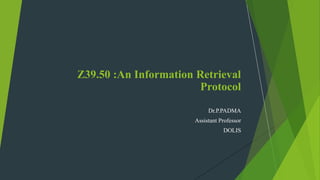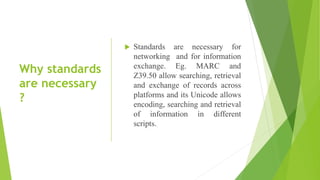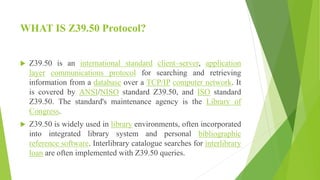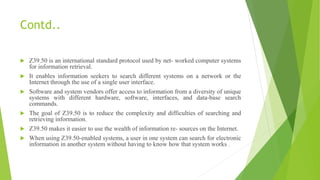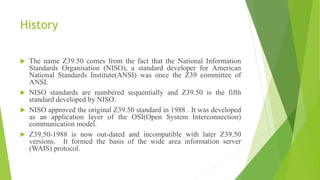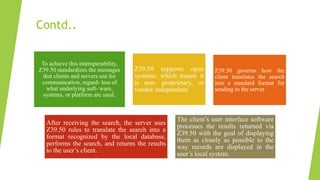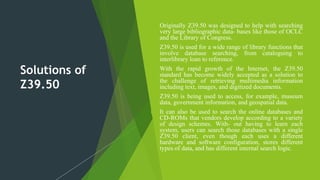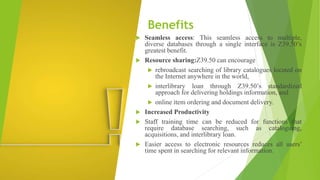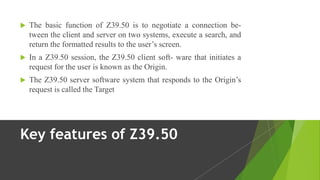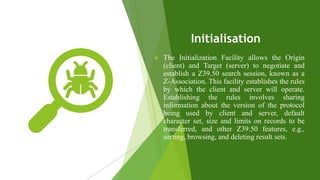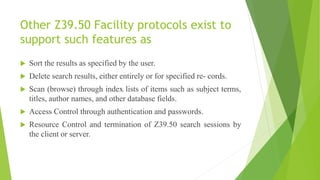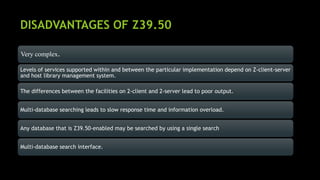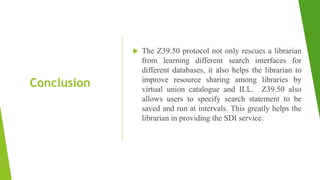The document discusses the Z39.50 protocol, an international standard for information retrieval designed to facilitate seamless searching and retrieval of bibliographic data across diverse databases and systems. It outlines the protocol's history, functionality, core features, benefits, and disadvantages, emphasizing its role in enhancing resource sharing and simplifying access to electronic resources. Z39.50 standardizes communication between different systems, enabling library professionals to efficiently manage varied information sources without needing to learn multiple interfaces.
